QuestionI was looking after a friends dog for the weekend and last night, he attacked my 3 year old tortoise. His shell has been chewed and he's been bleeding, i just seen that 80% of dog related attacks on tortoises get infected, is this true? If so, is there anything i can do to prevent this? He has been bathed in salt water and i was advised 2 clean it with a teabag, i also put petroleum jelly over the wound to act as a barrier, is this ok? Many thanks.
AnswerOk, lets do this by the numbers. most dog attacks really are not very serious.
1. Clean the tortoise completely and carefully. Lets get that petroleum jelly off, and see what we are really working with. (Clean it with a teabag? Odd piece of advice. Salt is OK as a scrubbing agent, if rinsed off well.)
2. Is there any bleeding now?
- Yes, a steady flow? See a vet ASAP!
- Yes, a little, an oozing, etc.? Apply a pich of cornstarch to the bleeding. If that stops it, go on. if not, see a vet.
- No? Go on to step 3.
3. Let's determine the damage.
- The shell should be a solid, rigid box around the tortoise. If the shell is badly cracked, has pieces missing, moves a lot when you touch it, or the tortoise cannot seem to breath without a lot of noise and struggling, take it to a vet ASAP.
- If the box of the shell is basically solid- even though there may be some punctures or cracking, we can do this at home.
4. Let's look at the rest of the tortoise. Is there much injury to the head, tail, or limbs? Again- active bleeding, fractures, etc. need a vet. if the injuries are minor (if any at all) we can do it at home.
5. Let's start dealing with infection, etc. Swab the shell with Providone Iodine (Betadine Solution), or Turtle Sulfa Dip. Focus on the injured areas, but clean as much of the shell and skin as you can. Keep it off the face unless the face is injured as well. Let it dry for about 30 minutes.
6. Next, let's stabilize the tortoise and let it rest a bit.
- Let it rest in a clean tub or box with a pile of clean cloths or towels it can dig into. Try to keep the tub warm- 85-90F, and humidify the air without getting the tortoise or towels wet or cooling the air. A warm vapor humidifier is best, but a cool vapor unit will work. Let it rest for at least a few hours. (This assumes it can breath OK and is not bleeding, rememeber.) Make sure it has the right lighting, water dish, and access to food if it will eat. Use the time to gather tools and do more research if desired.
- Let it soak in warm water for a little while (about 20-30 minutes) to get rehydrated. Keep it warm- about 85-90F or so. Use a thermometer and keep the temps in the right range.
7. A vet would want the tortoise to go through a nice long prep phase- get plenty of rest and fluids, calm down, get some antibiotics, etc. Since we don't have the tools to give it an IV or drugs, we cannot let the tortoise go for much longer before we act. By now, the tortoise should be calmer and probably defecated in the water.
Here, we will do different things based on the situation, and I'm going to have to make some guesses and oversimplifications.
CRACKED or PUNCTURED SHELL- Swab area with Betadine, let dry, then pack cracks or holes with antibiotic ointment or cream. Wrap shell with paper first-aid tape (to protect the shell), then with waterproof tape first-aid tape (or electrical tape) for strength- but keep it on top of the paper tape.
SCRATCHED, CHIPPED, or MISSING SCALES on shell- Scrub with Betadine and a brush (old toothbrush works fine.) If any pink or raw looking areas show up, swab with betadine, let dry, then apply anitbiotic ointment or cream. Use paper tape to cover injured areas.
SOFT TISSUE INJURIES, like cuts or scrapes on skin- dab with betadine, let dry. If the skin looks raw or is broken, apply antibiotic ointment. If possible, apply self-adhesive bandage or use a gauze pad and use paper tape to hold in place- but that is often difficult. If you cannot do it, just reapply cleaner and cream a few times a day.
Now, let it rest overnight.
2nd DAY CARE.
- Remove all bandages. Carefully look it over. Look for signs of infection (reddness, puffiness, clear or white fluids in wounds, etc.) See if everything works and moves OK. Carefully clean it off and let it soak a while.
- If minor signs of infection are seen, or if there are any openings in the shell, apply a little Hydrogen Peroxide, then retreat any injuries as described above.
- Let it rest again. If it is at all active and the weather is good, let it get outside. Make sure it has access to food, water, shade, and a hiding place. Try to make sure the space has not been treated with chemicals of any kind in the last few years, and avoid spaces with lots of mud, dog doo, etc. MAKE SURE IT IS SAFE FROM DOGS, etc.! Quite time outside will do wonders for it!
- Check on it every few hours- watch it breathe and move, look for signs of pain or abnormalities, see if it is eating anything. Look for signs of infection and retreat if any are found.
- At the end of the day, while still light out, do a last check and rebandage or retreat as needed. If the tortoise became dirty, make sure it gets washed well and re-swabbed with Betadine.
FOR THE NEXT WEEK- basically repeat the plan. Watch for bad signs and take it to the vet ASAP if they show up- infections, signs of illness, breathing problems, bleeding, inability to move right, etc.
As the injuries start to scar or skin over, you can back off.
Another thing to think about is dietary support. I don't know what species your tortoise is, but you need to make sure that it is being offered the right foods during this phase. Make sure it is getting enough vitamins and minerals by either supplementing the diet with a good quality tortoise chow, or with extra dashes of multivitamins. You may need to offer softer than usual or tastier than usual foods for a few days.
One good recipe for 'hospital food' is to take about a tablespoon of organic baby food (depending on the species, use something they like but a common choice would be squash), mix in a big pinch of reptile vitamin and calcium carbonate powder, then toss it with about 1/3-1/2 cup of frozen mixed veggies (a mix with no beans or corn in it, and chopped pretty small). The veggies should be warmed up and thawed, but not served warm.
I hope this helps. A couple good on-line resources to look at would be
- http://www.tortoisetrust.org
- http://www.austinsturtlepage.com

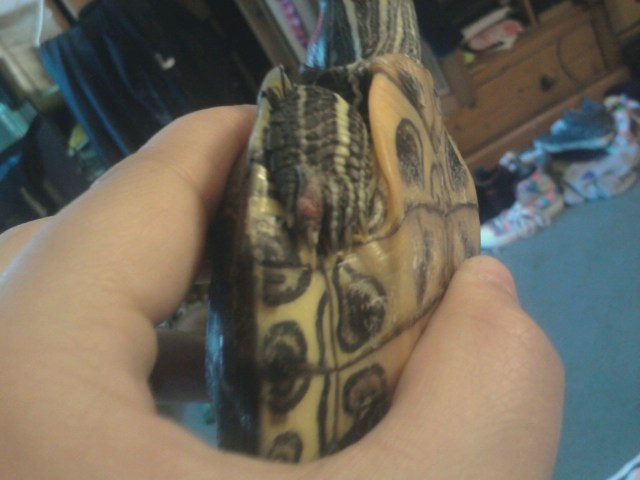 Turtle skin problem
Question
Paw bleeding
My turtle Squirtle is a Red Ear S
Turtle skin problem
Question
Paw bleeding
My turtle Squirtle is a Red Ear S
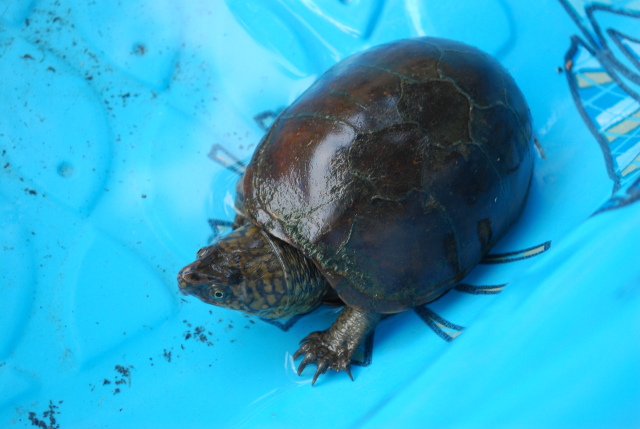 What is my turtle?
QuestionNew Turtle
QUESTION: I have a turtle tha
What is my turtle?
QuestionNew Turtle
QUESTION: I have a turtle tha
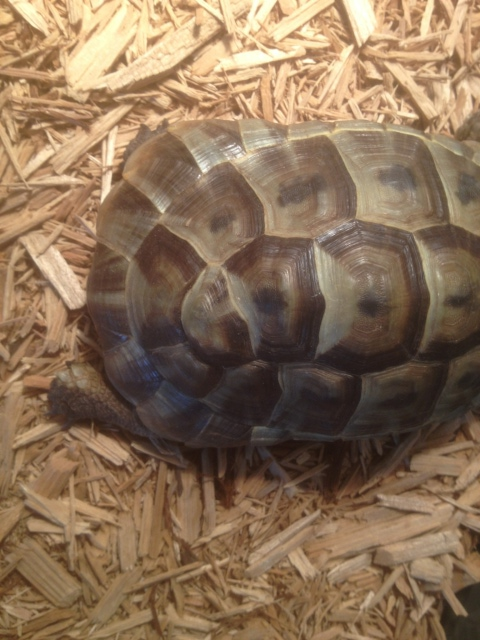 Greek tortoise shell question
Question
Tortoise shell 1 Tortoise shell 2
Greek tortoise shell question
Question
Tortoise shell 1 Tortoise shell 2
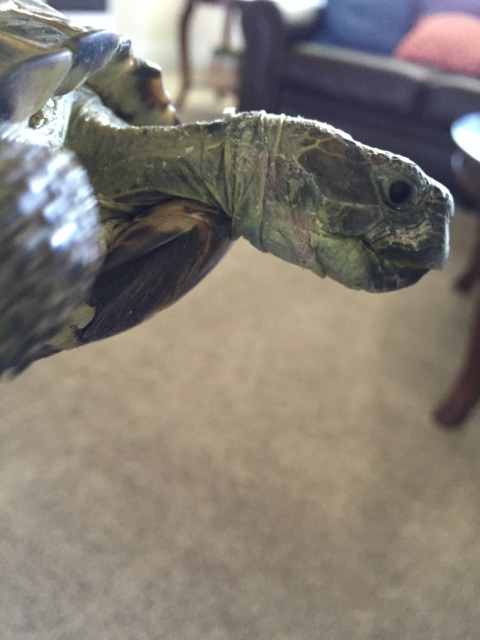 Red spots on tortoises head/neck
Question
Red Spots
We have a Russian tortoise we
Red spots on tortoises head/neck
Question
Red Spots
We have a Russian tortoise we
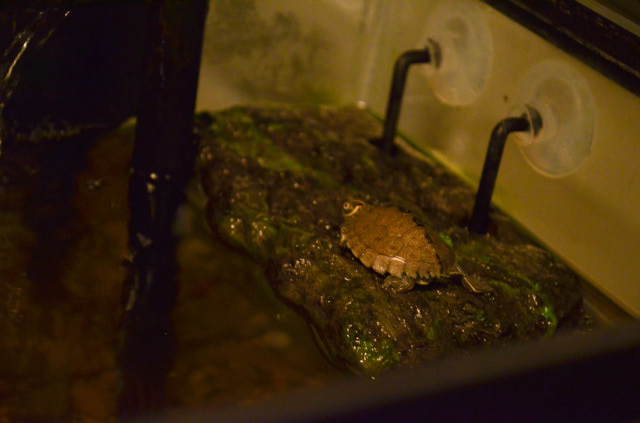 baby RES is lethargic
Question
Baby, "Harry Potter" Malfoy &n
baby RES is lethargic
Question
Baby, "Harry Potter" Malfoy &n